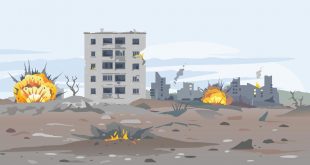The triumph of peace in contemporary societies is expressed as an obvious fact by mainstream intellectuals. Noting the relatively peaceful state of the world is part of a broader narrative to paint a positive picture of humanity. Yet there is a kernel truth to the assertion that quality of life indicators are improving, as explored by Marian Tupy and other optimists. But the game of warfare is more complicated. Steven Pinker in his compelling tome The Better Angels...
Read More »The Political Alchemy Called Modern Monetary Theory
The new kid on the economics block is something called modern monetary theory. The name is new, but the “theory” is not. Proponents adamantly claim that it is both new and a theory of economics. To make it appear this way, they dress the ideas in unusual-sounding jargon and use rhetorical tricks. For example, instead of presenting actual arguments or responding to direct questions, they present a circular flow of deepities. To top it off, they, at least in my humble...
Read More »The Political Alchemy Called Modern Monetary Theory
The new kid on the economics block is something called modern monetary theory. The name is new, but the “theory” is not. Proponents adamantly claim that it is both new and a theory of economics. To make it appear this way, they dress the ideas in unusual-sounding jargon and use rhetorical tricks. For example, instead of presenting actual arguments or responding to direct questions, they present a circular flow of deepities. To top it off, they, at least in my humble...
Read More »Mark Spitznagel Teaches the Economists How to Invest
Bob reviews Mark Spitznagel’s latest book, Safe Haven: Investing for Financial Storms, on which he was a consultant. Bob explains that Spitznagel rejects the alleged dichotomy between risk and return, and then gives a numerical example to illustrate the two schools of thought. Mentioned in the Episode and Other Links of Interest: Bob’s appearance on Jordan Peterson‘s podcast Bob’s surprisingly high ranking among influential economists His episode with Winston...
Read More »Mark Spitznagel Teaches the Economists How to Invest
Bob reviews Mark Spitznagel’s latest book, Safe Haven: Investing for Financial Storms, on which he was a consultant. Bob explains that Spitznagel rejects the alleged dichotomy between risk and return, and then gives a numerical example to illustrate the two schools of thought. Mentioned in the Episode and Other Links of Interest: Bob’s appearance on Jordan Peterson‘s podcast Bob’s surprisingly high ranking among influential economists His episode with Winston...
Read More »The Fed Is Helping Facilitate Trailer Park Evictions
Sorry, I've looked everywhere but I can't find the page you're looking for. If you follow the link from another website, I may have removed or renamed the page some time ago. You may want to try searching for the page: Search Searching for the terms %3Futm+source%3Drss%26utm+medium%3Drss%26utm+campaign%3Dmaharrey+the+fed+helping+trailer+evictions ...
Read More »The Fed Is Helping Facilitate Trailer Park Evictions
The Federal Reserve is helping corporate real estate investors evict poor people from mobile home parks. NPR highlighted the growing number of mobile home part evictions. According to the report, real estate investors continue to buy up mobile home parks across the US. They then raise lot rents and fees, and evict residents who can’t pay. As the report explains, the government makes this scheme possible with easy financing through agencies such as Fannie Mae and...
Read More »Using the “Natural Interest Rate” In Setting Monetary Policy Is an Impossible Dream
"The ideas of economists and political philosophers, both when they are right and when they are wrong, are more powerful than is commonly understood. Indeed the world is ruled by little else. Practical men, who believe themselves to be quite exempt from any intellectual influence, are usually the slaves of some defunct economist."–John M. Keynes1 It is held by many commentators that the Fed’s monetary policy, which is aimed at achieving price stability, is the key...
Read More »A Legacy of Corruption in the FDA and Big Pharma
Our healthcare system is broken, a fact nobody would have disputed in precovid days. Regulatory capture is a reality, and the pharmaceutical industry is fraught with examples. Yet we trusted private-public partnerships to find an optimal solution to a global pandemic, assuming a crisis would bring out the best in historically corrupt institutions. Here is a brief list of less-than-savory behavior demonstrated by our titans of healthcare: Pfizer and Johnson &...
Read More »Preserving Capital through Bankruptcy
While bankruptcy has a negative connotation in the business world, “Bankruptcy fulfills the crucially important social function of preserving the available stock of capital.” Original Article: “Preserving Capital through Bankruptcy” The New York Times recently published a piece entitled “When Kmart Moved Out, Churches and Flea Markets Moved In.” The article, penned by Kevin Williams, provides an instructive subtitle: “The retailer’s former stores are being used...
Read More » Swiss Economicblogs.org
Swiss Economicblogs.org






